Boxed in: the rise of the un-kit
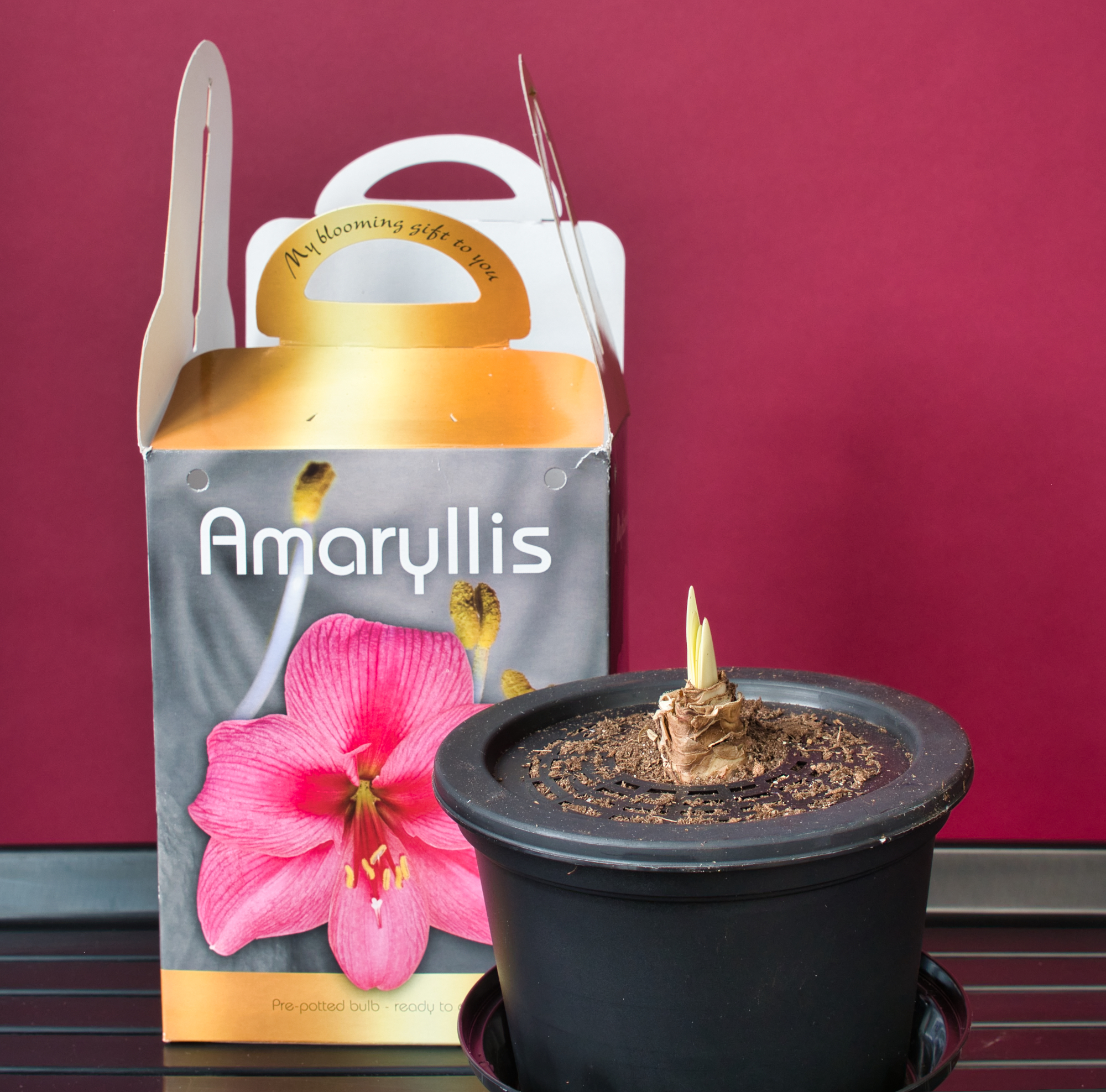
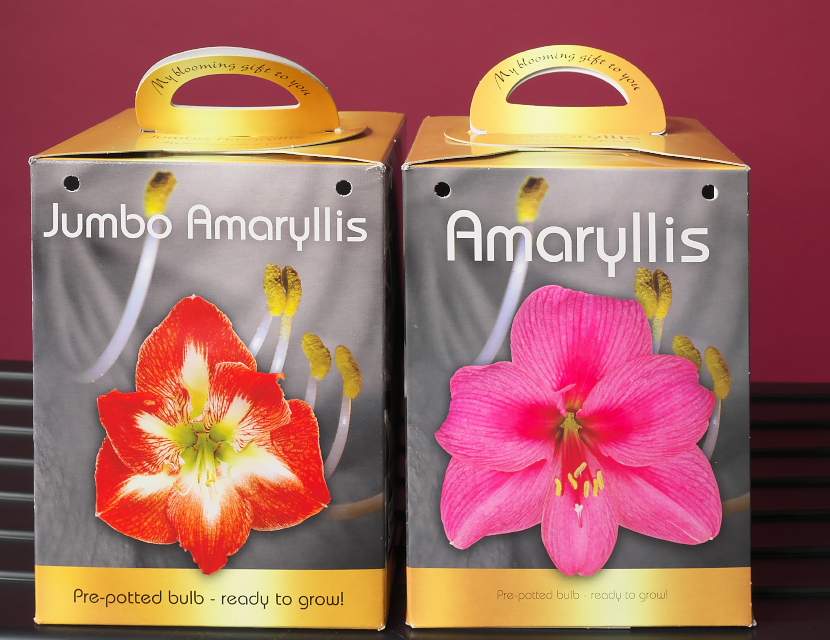
When Emaryllis started the first Box Kit Bonanza way back in 2008, the offerings may have varied in the types and qualities of pots, media (the coir disc was already de riggeur), and of course bulb quality, but they all had one thing in common, they were “kits”. That meant that there was some work to do in assembling the parts before the show could begin. Fast forward to more recent days and we see that even the simple (and fun!) effort to pot up the bulb is just too much for some, and thusly we have entered the waxed bulb era. What is the box format to do? Being easily transported, and stackable in retail outlet displays means they aren’t going away…not just yet. How will they hold on? Well, here’s one idea (x 2).
Here we have what may be the ultimate in simplicity, just water, place in a bright window, and wait. I know, I know, water you say? If that sounds like a lot of work, these aren’t for you. One thing that was noticed immediately upon handling the boxes in the store was that they had some definite heft to them. The kits with dry coir discs are almost as light as air. These aren’t kits at all, they are a complete package…truly gift ready, and truly pre-potted as the box announces.
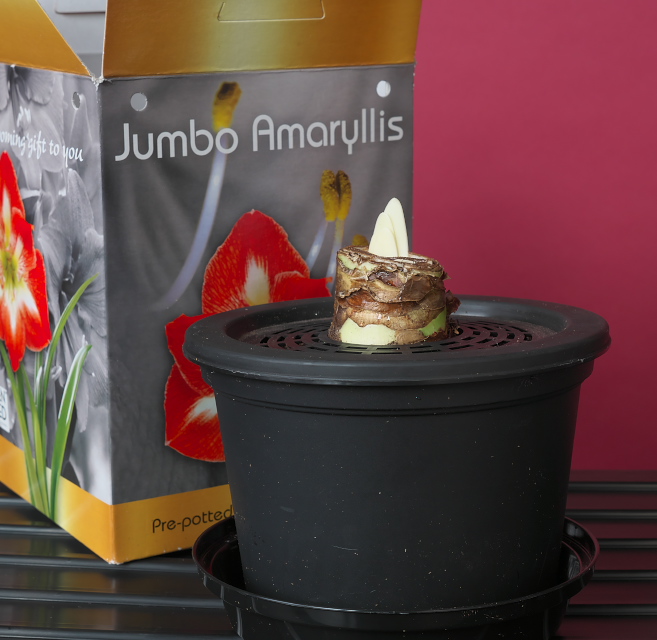
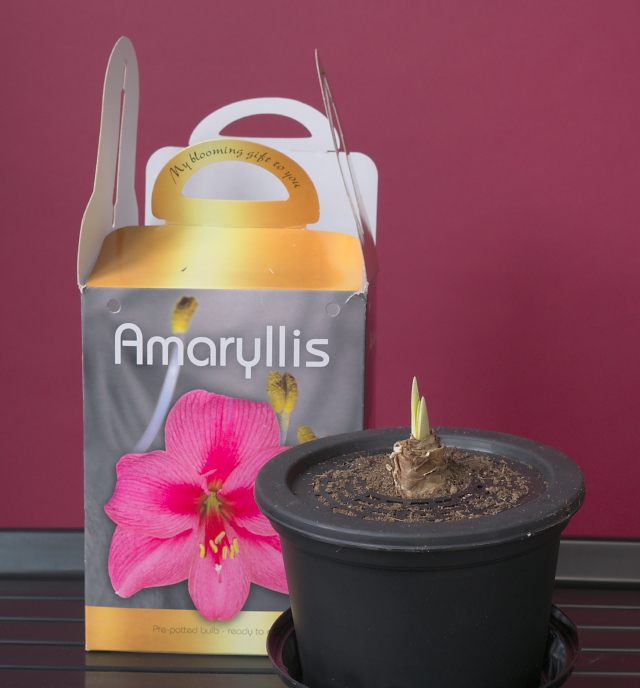
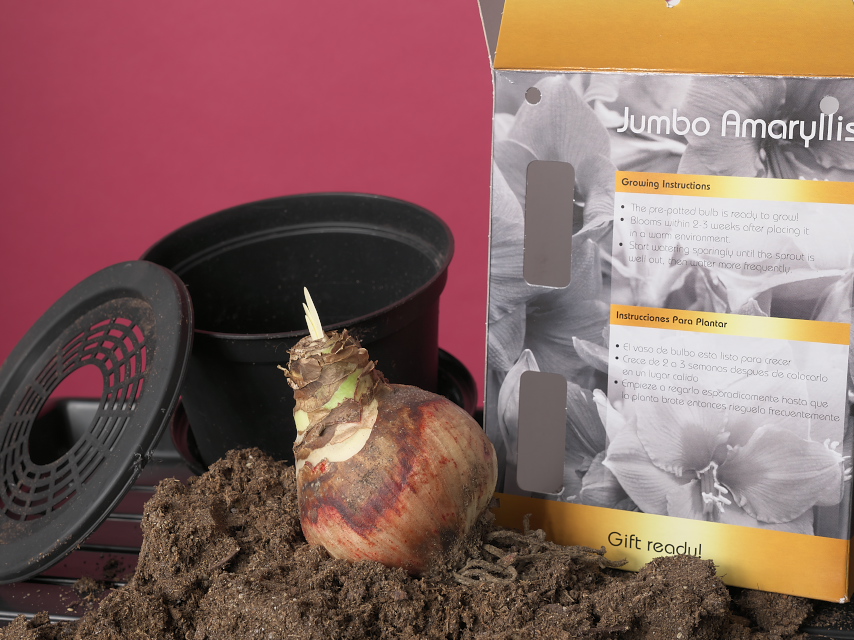
No cultivar names are called out on either kit, but the flower on the striped or bicolor kit sure looks like ‘Minerva’. The bulb measures 26cm, which is nice considering the box doesn’t declare a bulb circumference. No live roots are found, but the medium is moderately moist, which should signal the bulb to send roots out pronto. The mix also insulates the bulb from temperature swings and from excessive drying. The soiless media for these kits is quite good, being coir based, but probably blended with other organic constituents. It also includes sand rather than the more typical aerating aggregate. The sand gives the mix the bulk density/weight needed to keep the bulb upright during growth, since we won’t be keeping the retainer ring on. The medium is coarse and fibrous enough that there should be plenty of oxygen in the root zone.
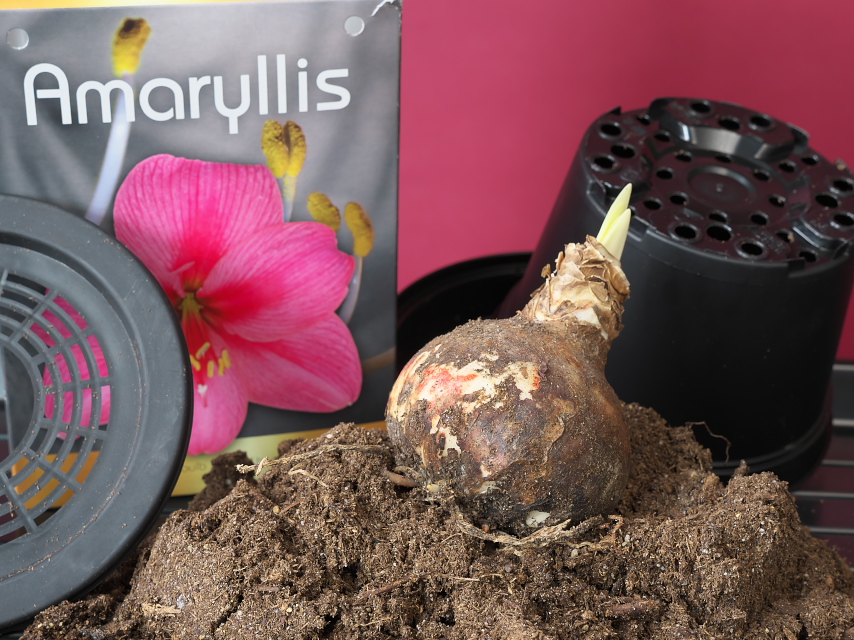
The pots in these kits measure 6″/15cm and are provided with tons of drainage holes. Add in the saucer, and again, we have a very complete presentation.
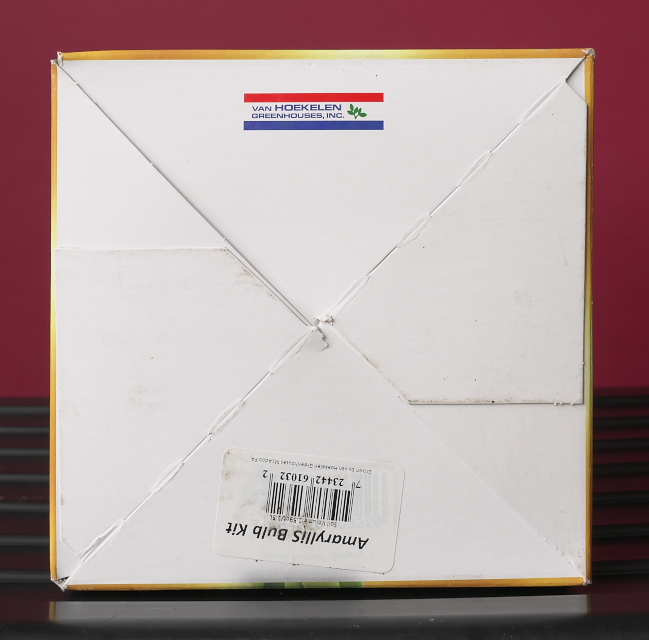
The box was assembled in Pennsylvania, but nowhere is the bulb origin noted, just that it is USDA inspected. These offerings are likely bearing bulbs from Brazil or Peru.
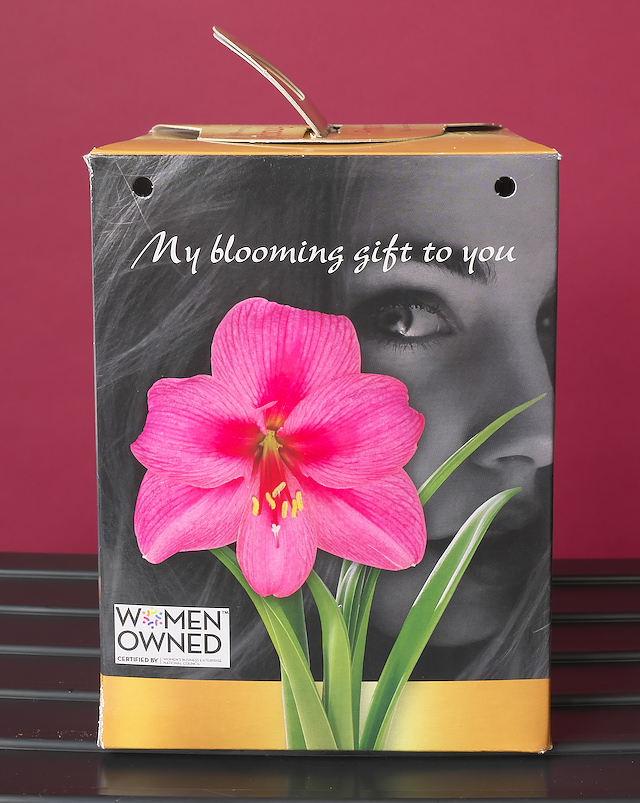
Aside from the almost disconcerting stock photo of a woman’s face on the pink flower box (the other box is thankfully spared this touch, having more appropriate floral motif) these kits are placed in entryways of a local grocery store chain, and by all accounts seemed to sell well. I noticed a pricey waxed bulb in a fancy cardboard stand nearby that didn’t seem to sell. The price difference was significant, and here the boxed format has an easy win.
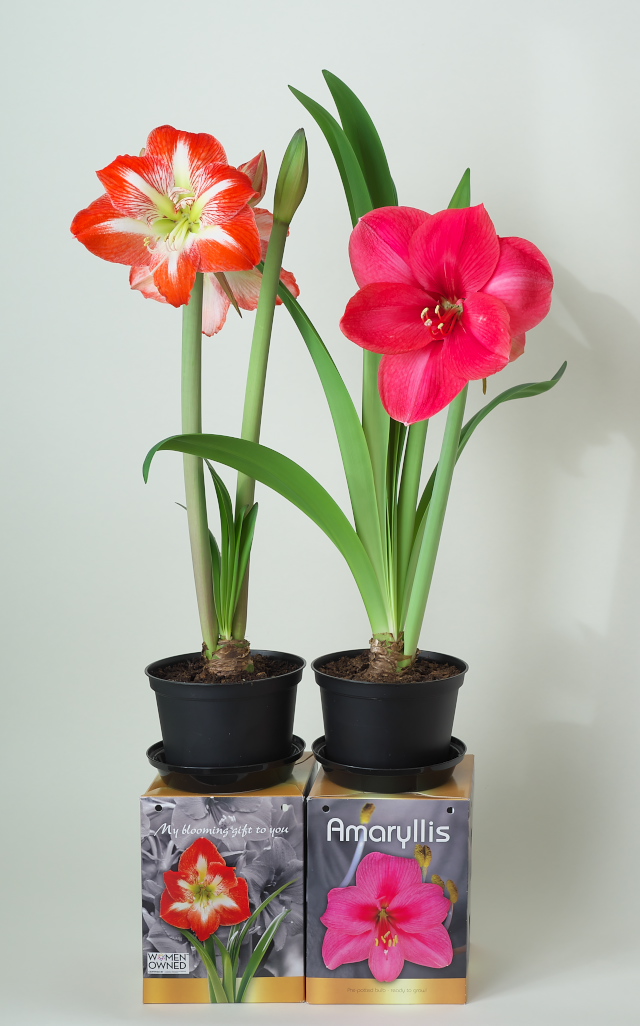
The show starts in earnest mid December 2020 and the two kits are remarkably timed in near unison. The box images are clearly a match for their respective flowers, a great job here! All too often box kits can’t even get the flower color indicated. While ‘Minerva’ was easy to discern, the pink flower is not as easy to identify. Because of the large, lopsided form, the first variety to come to mind is ‘Rosita’, which has never performed well here at the ranch. It seems to have recently disappeared from catalogs and wholesalers pages, so this may be its last gasp. If it really is ‘Rosita’ it also would confirm the bulb origin being from South America, the only place that this cultivar has been produced in quantity.
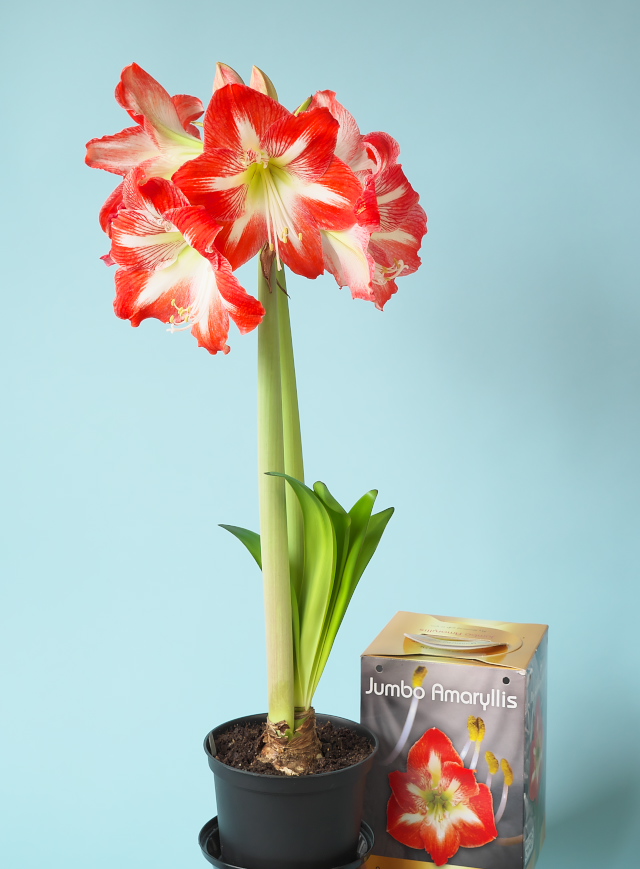
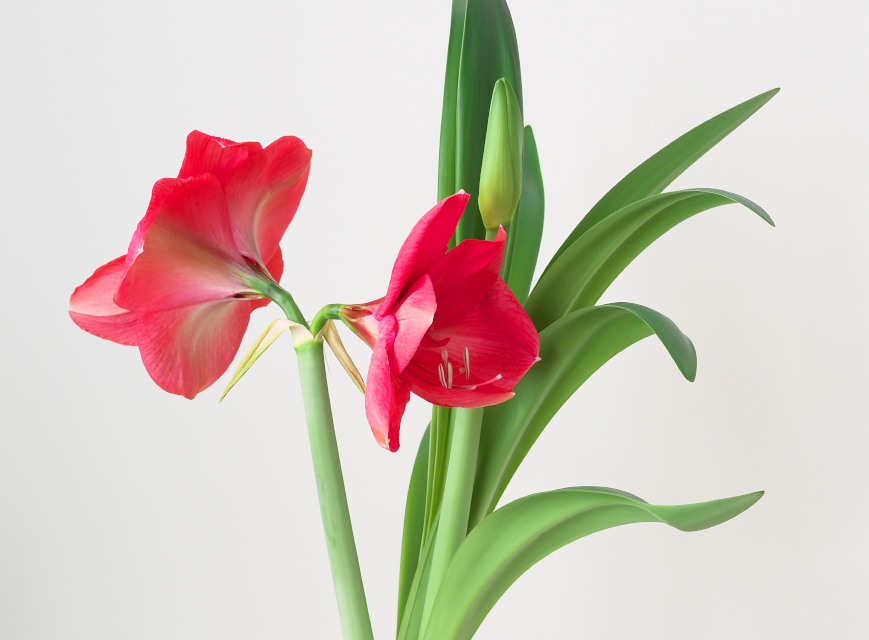
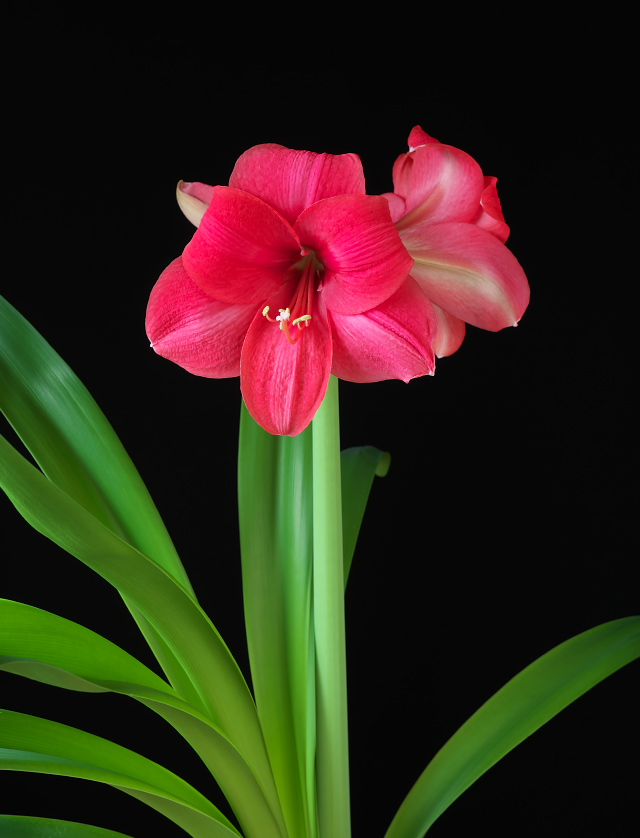
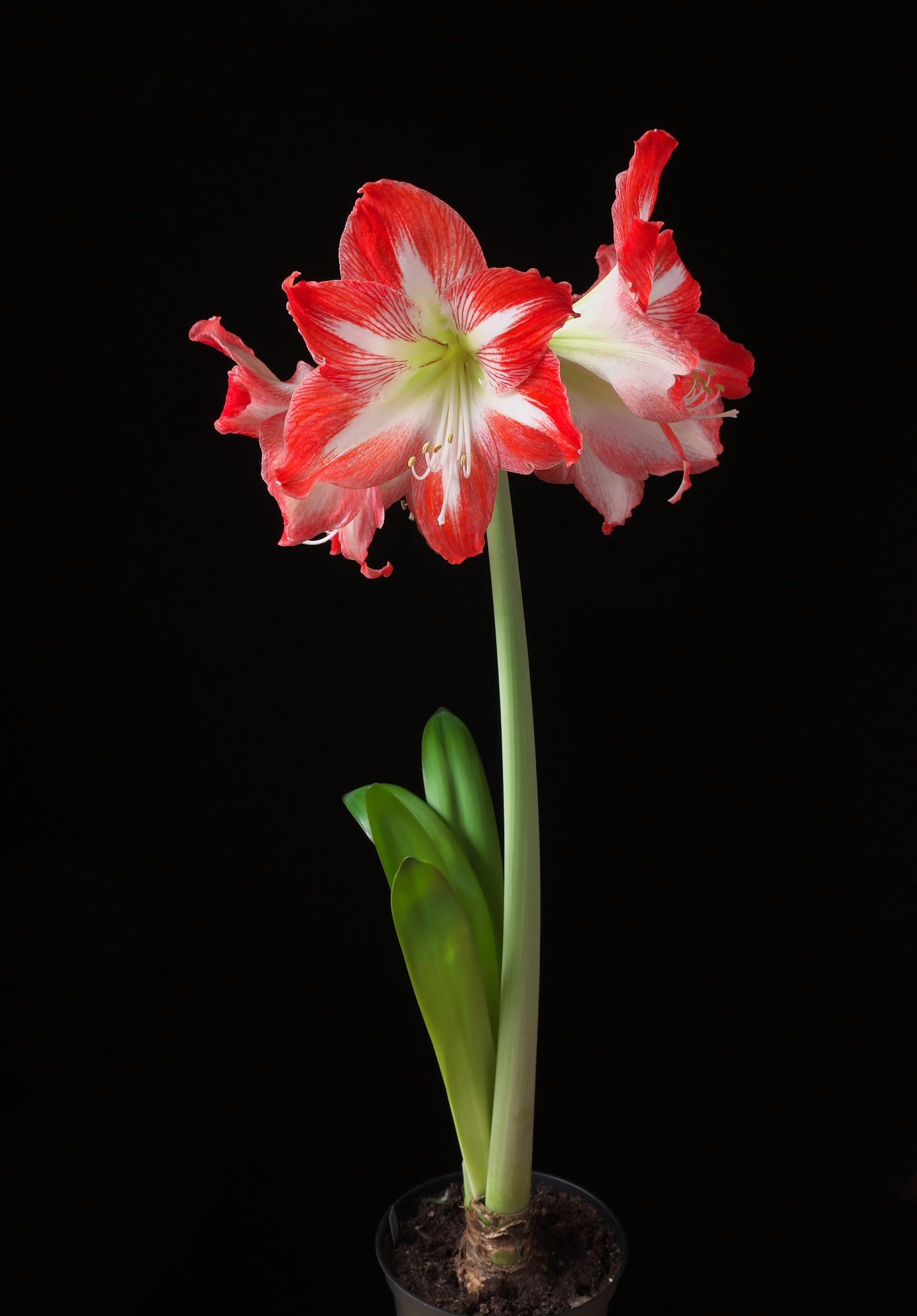
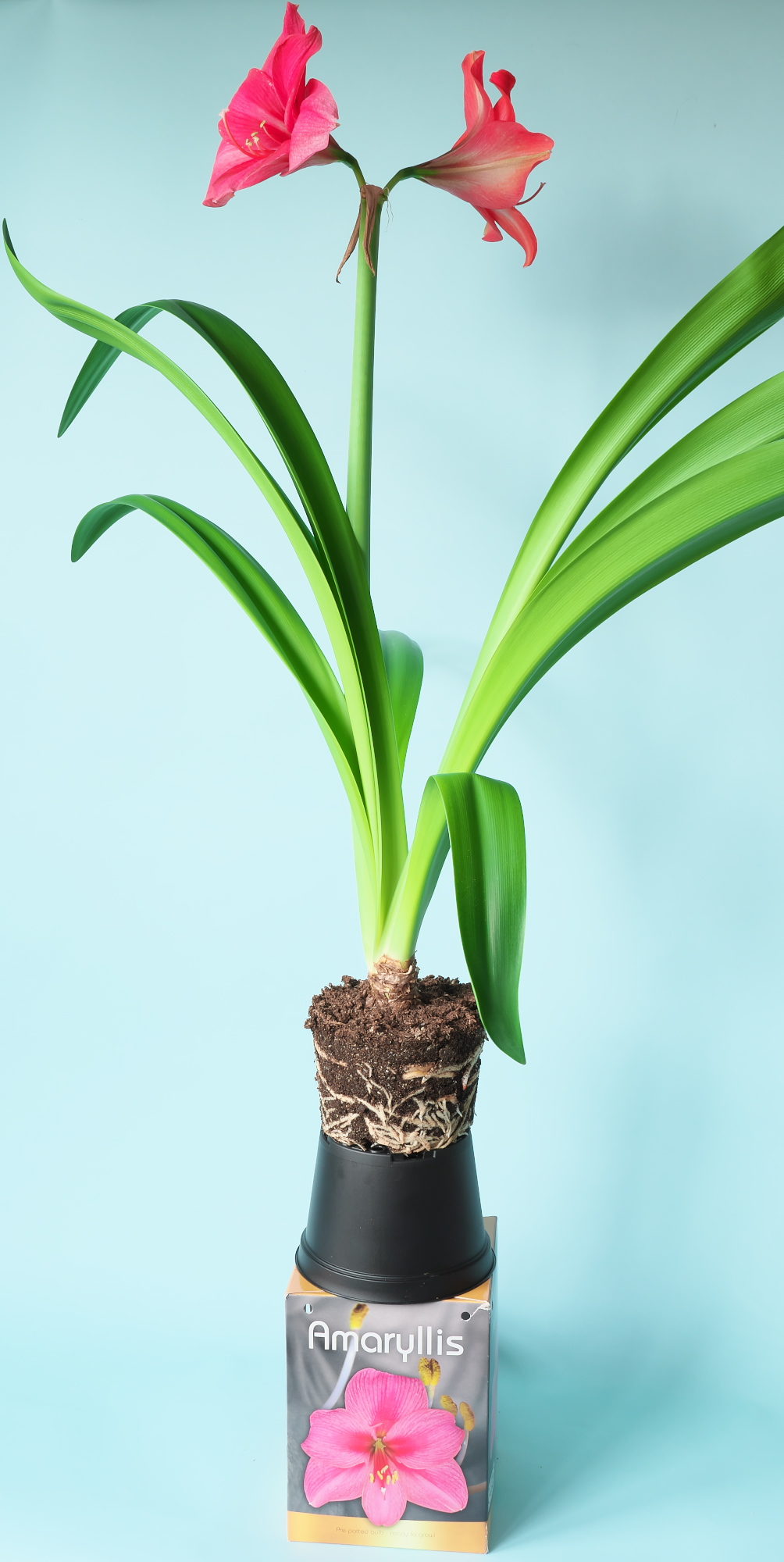
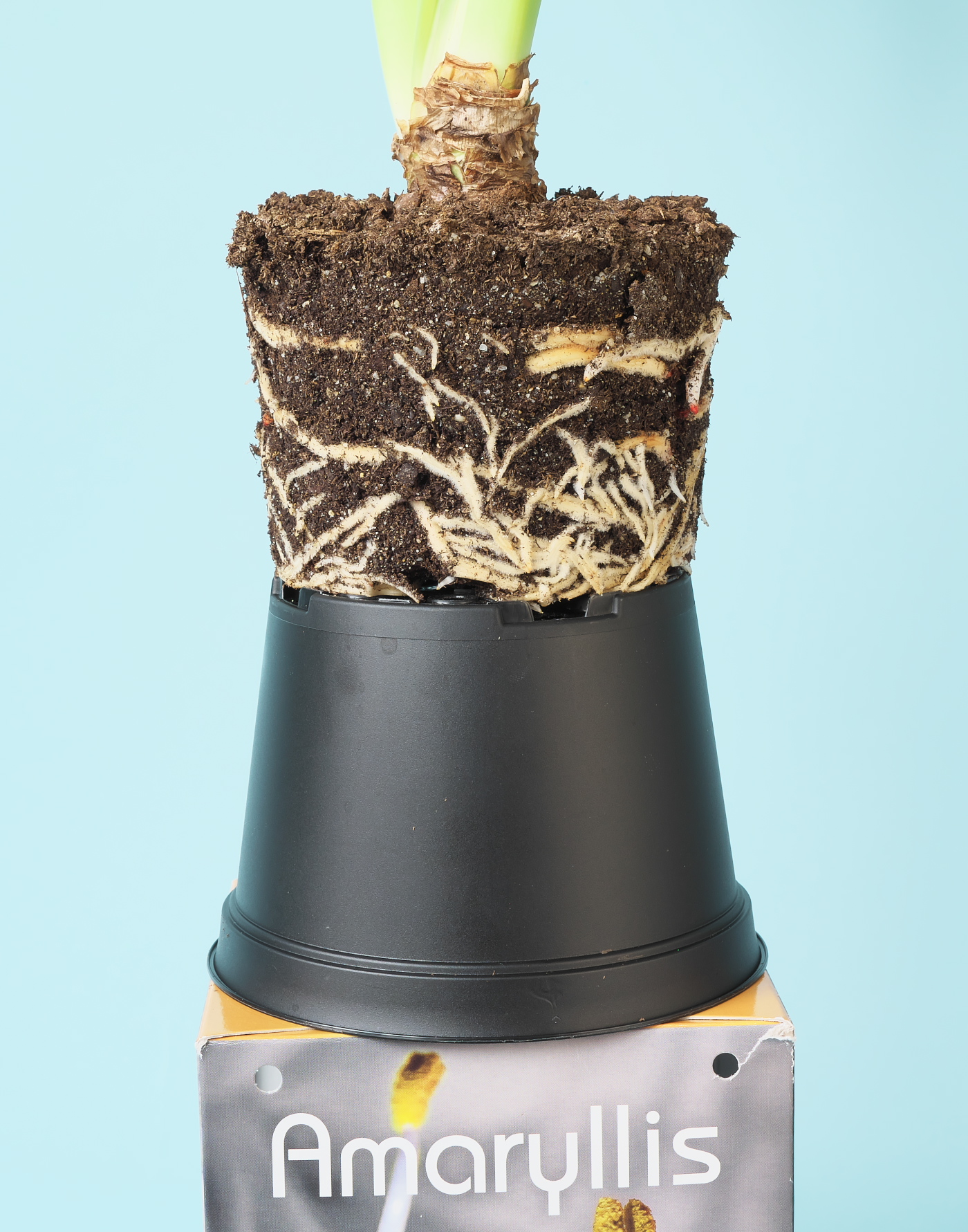
Here we have it, the most compelling reason for favoring a box kit, box “un-kit”, or a sleeved pre-potted amaryllis over those expensive waxed wonders. While surely more work will be done to select hybrids that perform better without watering, the chance to grow a plant, is the only way to propel the kind of show we see here. Root production gives the best performance, as well as the best prospect (should one want to try) for future seasons of bloom. Perhaps by pre-potting, the box format seen here strikes the perfect balance between easy care and quality of show that amaryllises are capable of.

I was interested to note your comment about the absence of red blotch in these kits. Over the past 3 years, I’ve noticed red blotch (and an absence of live roots) in the expensive garden centre boxed kits (as well as a tendency for the flower to look nothing like the cultivar advertised on the box). The cheap supermarket kits have all been free of red blotch and all but one has had at least some live root. Plus good drainage holes. As far as I can see, the only advantage of the expensive kits is the named cultivars…but as they’re usually wrong anyway, I’m sticking to my £4 nameless box kits in future!
One of the main reasons for the move to growing in Peru in particular is that the climate naturally discourages fungal diseases, and these are often the least expensive, mass produced bulbs. Perhaps that is why the bulb kits are much cleaner of late, but whatever the reason it is a welcome development!